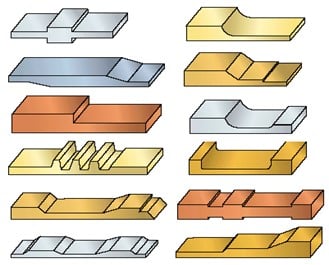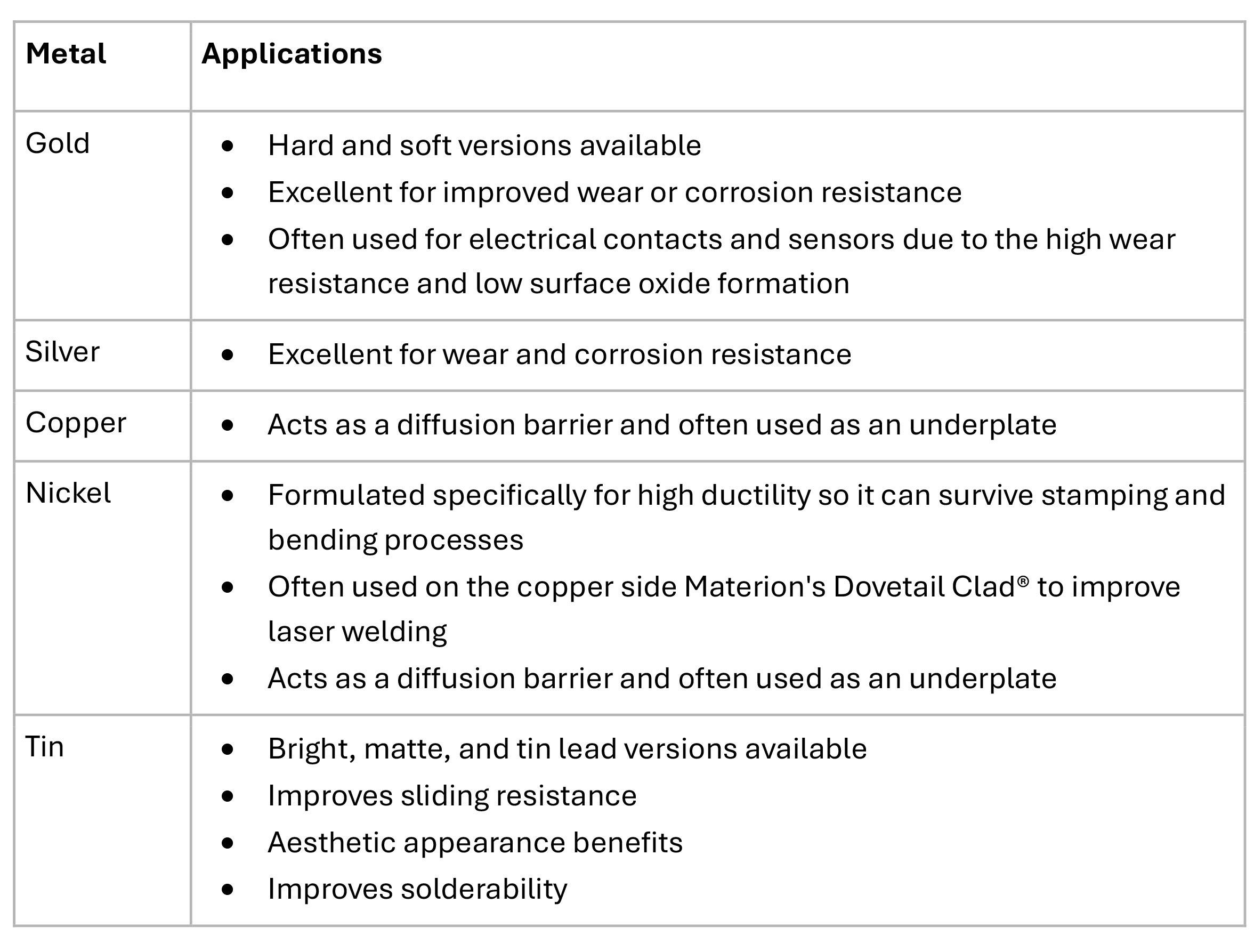
In the first four installments of this series, we explored the fundamentals of clad metals, including the benefits of cladding, the underlying technologies, and performance considerations across applications. This fifth article focuses on three additional value-added processes that expand the design possibilities of clad materials: electron beam (EB) bonding, profiled strip, and reel-to-reel plating.
ELECTRON BEAM (EB) BONDING
Electron beam bonding is a continuous strip welding process performed under vacuum, enabling the precise joining of dissimilar metals (Fig. 1). This technique is commonly used to manufacture shunts and resistors for automotive systems such as battery management, infotainment units, electronic parking brakes, and HVAC components.

Figure 1. Schematic of the EB bond process.

Figure 2. Possible EB bond configurations.
A typical configuration welds a resistive alloy – such as Manganin®, Evanohm®, or Kanthal® – between two layers of copper or copper alloy, forming a stable, low-resistance electrical path (Fig. 2). EB bonding can accommodate a wide range of alloys and geometries, allowing for the creation of customized solutions for specific needs. Generally, a facility like Materion’s can process material 0.5-4 mm thick and 10-190 mm wide.
PROFILED STRIP
Profile milling introduces customized contours across the width of a strip, running continuously along the entire coil. This process can reduce downstream machining steps, helping to lower cost and lead time for component fabrication.
Profiled strip is particularly valuable in high-volume connector production for automotive applications, thoug h the method is adaptable to a broad range of metal types and geometries (Fig. 3).

Figure 3. Example profiles that Materion can mill into strip metal.
PLATING
Plating enhances the functionality and performance of metal strips, adding properties such as solderability, weldability, wear and corrosion resistance, or visual appeal. Reel-to-reel plating allows for multiple layers of metal to be deposited in a single pass, enabling efficient production and precise layer control.
Plating can be done using a reel-to-reel method that eliminates the need for rack or barrel plating of individual components. With reel-to-reel plating, the material can pass through multiple plating baths in one operation, allowing for multiple layers of plating.
Underplating is an option when different plating layers are desired. It is most often used when a diffusion barrier is required.
Selective plating is another cost-efficient approach, applying precious metals like gold or silver only where performance requirements demand.
Materion’s plating baths support a variety of metals, each chosen for specific engineering outcomes:

Electron beam bonding, profiled strip, and reel‑to‑reel plating offer additional ways to tailor clad metals for demanding applications. These processes provide engineers with greater design flexibility, enable performance‑critical features, and can help streamline manufacturing by integrating bonding, profiling, and surface finishing into continuous strip production.
This article concludes our five‑part Introduction to Clad Metals series:
Together, these articles provide a comprehensive overview of cladding technology, from fundamental principles to advanced manufacturing methods, equipping engineers with insights to evaluate and leverage clad metals in next‑generation designs.
Learn more about Materion's family of clad metals on our website.